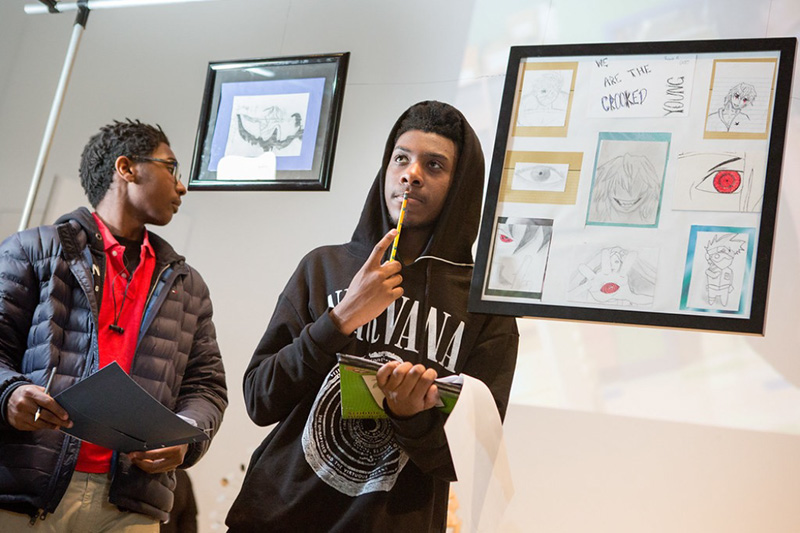Grade Level: 7 – 12th
Content area: Career Technical Education-Pathways: Arts, Media, and Entertainment
Standard identifiers: HSS-3.2.2
Objectives: Students will:
- Demonstrate understanding of the elements of art, including line, shape, color, value, texture, and space, to set the mood and feel of a scene.
- Analyze, assess, and identify effectiveness of artistic products based on elements of art.
- Create an artistic product that involves the effective use of the elements of art and the principles of design.
Materials and Resources:
Assessment (informal):
- Students analyze several art pieces’ effectiveness based on elements of art.
- Students select a few art elements to create an artistic product that expresses a moment in history or a movement that they are passionate about.
Strategies for English Language Learners and Learners with Special Needs:
- Select a few elements to focus on.
- Select one or two art pieces to analyze.
Instructional Sequence:
Introduction and explanation to students about the purpose of the lesson (3 minutes)
Art can be described as the expression of human creativity and imagination. However, that can be many different things. Art can be music, dance, paintings, fashion, or any other number of things. Every person can find a style of art they like. It is helpful to be able to describe what you like or do not like about a work of art. The “Elements of Art” are the building blocks that help people to talk about what they notice in an artwork. As artists, we can use these elements to make statements in our creations.
Teacher modeling (15 minutes)
- Show the students the presentation in MVC’s Virtual Learning Module #10: Elements of Art. Introduce and discuss each element. Use the examples on the slides to highlight the use of each element in the pieces. Ask students why they think the artist chose to use that particular element to convey their message.
Guided practice (20 minutes)
- Select as many pieces as you think appropriate to show the class from the “Look at Art; Looking at History Through Art presentation (PPT and PDF links above in the materials section). Ask them to discuss questions in pairs or small groups:
- What element is used most prominently?
- Why do you think the artist chose to use this element?
- What is the message of the art?
- How does this piece make you feel?
Practice (independent) (60 minutes)
- Students create their own art piece to express a historic moment they feel passionate about. Students should be prepared to explain what element they chose to incorporate to their art and why they chose it.
Closure (20 minutes)
- Students present their art to the class or a smaller group.
Monitoring for student learning/understanding:
- Ask students to explain their answers in greater detail to show understanding.
Reflection after the lesson:
Take reflection notes on how the lesson went for your future reference.


